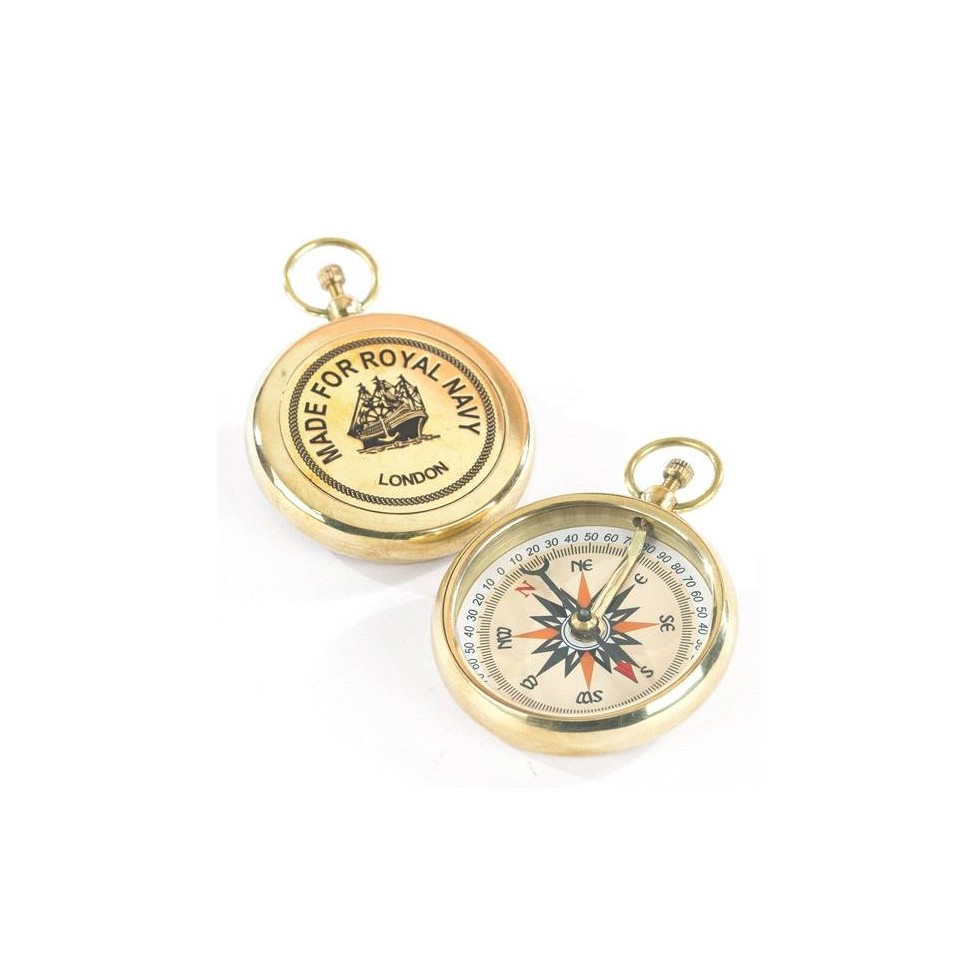

| Los pedidos realizados el día 25 de Julio, se procesarán el día 26 por fiesta local. |


Brass pocket compass with lovely compass rose.
The compass (from the Latin "passus" ("step")) opened up the world to exploration and discovery. The principle of the magnetic needle was already known to the Chinese in the 3rd century BC and was first used by feng shui priests to tell them where and how to build. It was adapted to maritime navigation by Chinese sailors around the year 1000. The first compasses comprised a magnetic needle floating in a bowl of water, with the needle suspended on a thread or threaded through a reed. The Arabs perfected this by mounting the needle on a pivot. The compass arrived in Europe between the 10th and 11th centuries, enabling sailers to cross the oceans and explorers to discover the continents. The first instrument to resemble the modern compass is attributed to Portuguese citizen Ferrande (1483).
Brass pocket compass with lovely compass rose.
Compass in antiqued finish brass on which stands a globe. The base is made of rosewood.
The telescope appeared between the 16th and 17th centuries in the Netherlands. Its development is credited to Hans Lippershey and in its early stages was mainly used by sailors and naturalists.Reproduction telescope in antiqued brass. Comes with an acacia wood box with brass inlays and plaque.
High-precision moonphase clock from the prestigious IMEX Marine brand. Clear acrylic frame. Made in Spain. 1 year warranty. 15x15x5 cm.
Elegant brass hand bell with acacia wood handle.
Ship's bell in brass with lanyard. In the past this essential instrument was used to organise life on board by regulating the duty watches. It was also used as an alarm bell in thick fog and to mark celebrations.
IMEX Marine tide indicator, a great benchmark in quality measurement devices. With a single glance, this elegant tide indicator IMEX Marine offers you the level of the tides throughout the year.